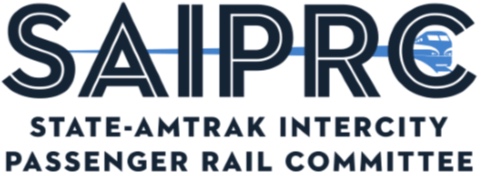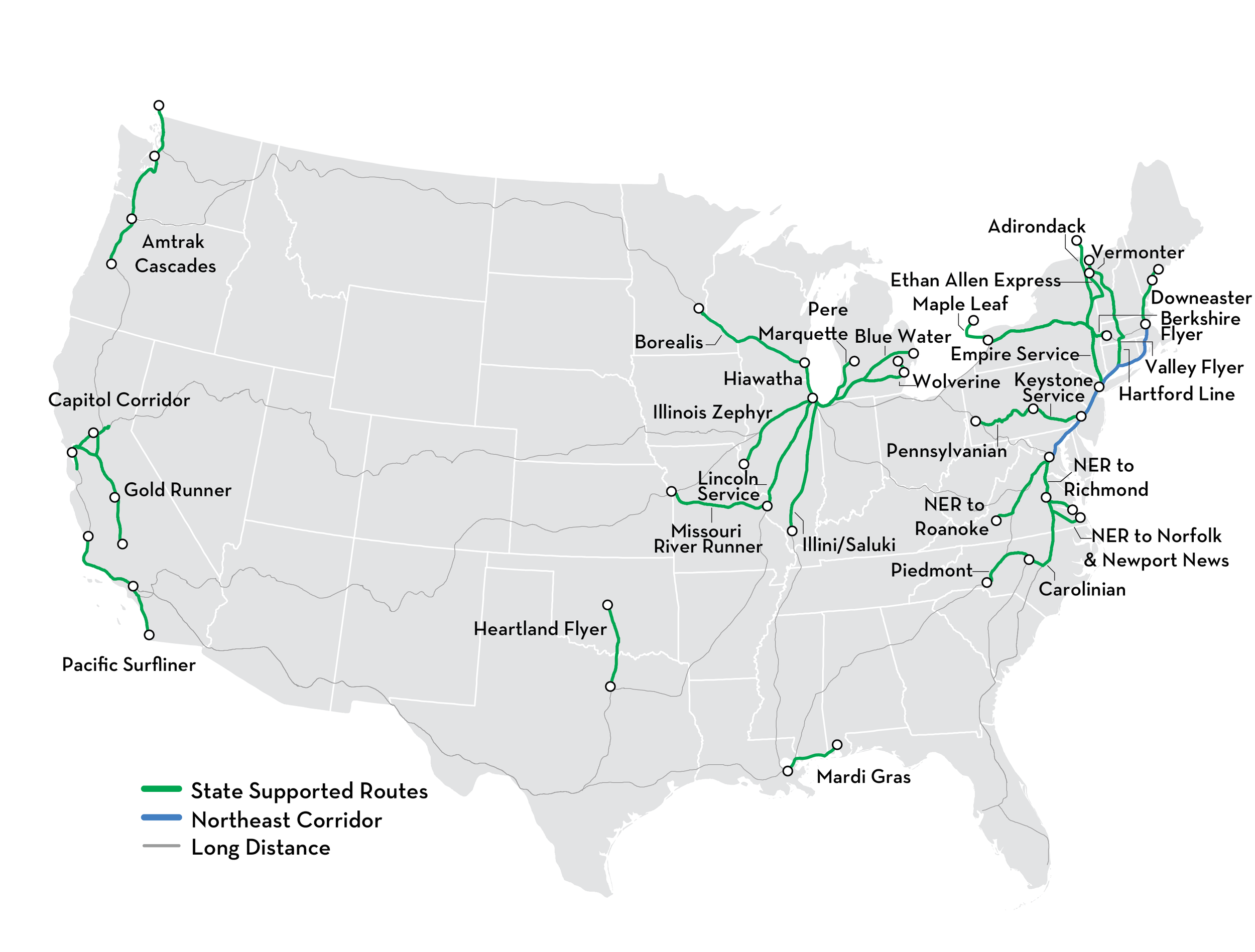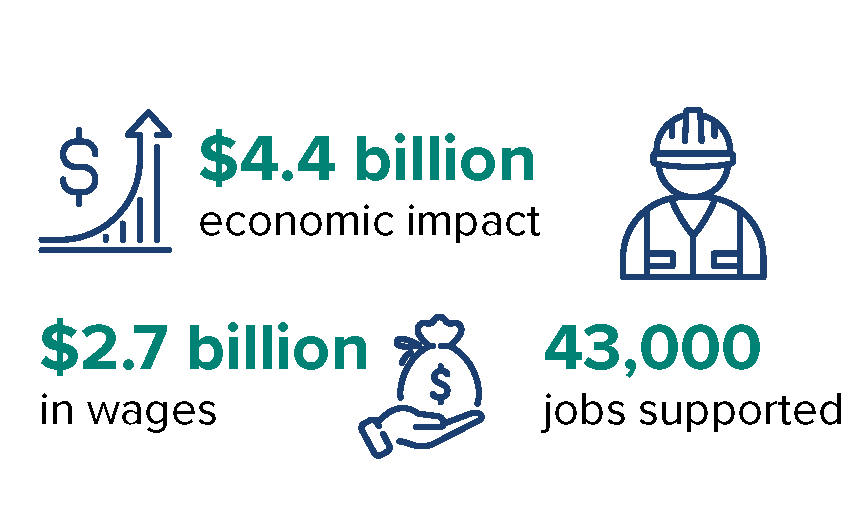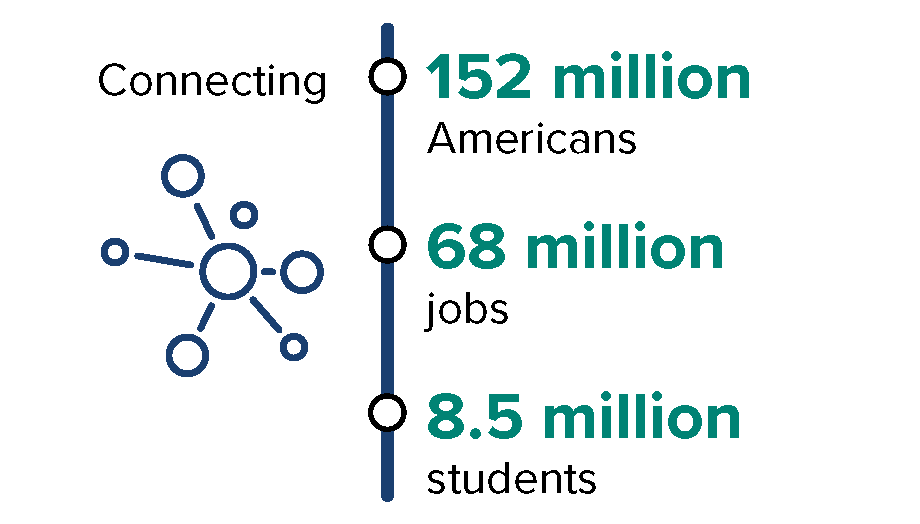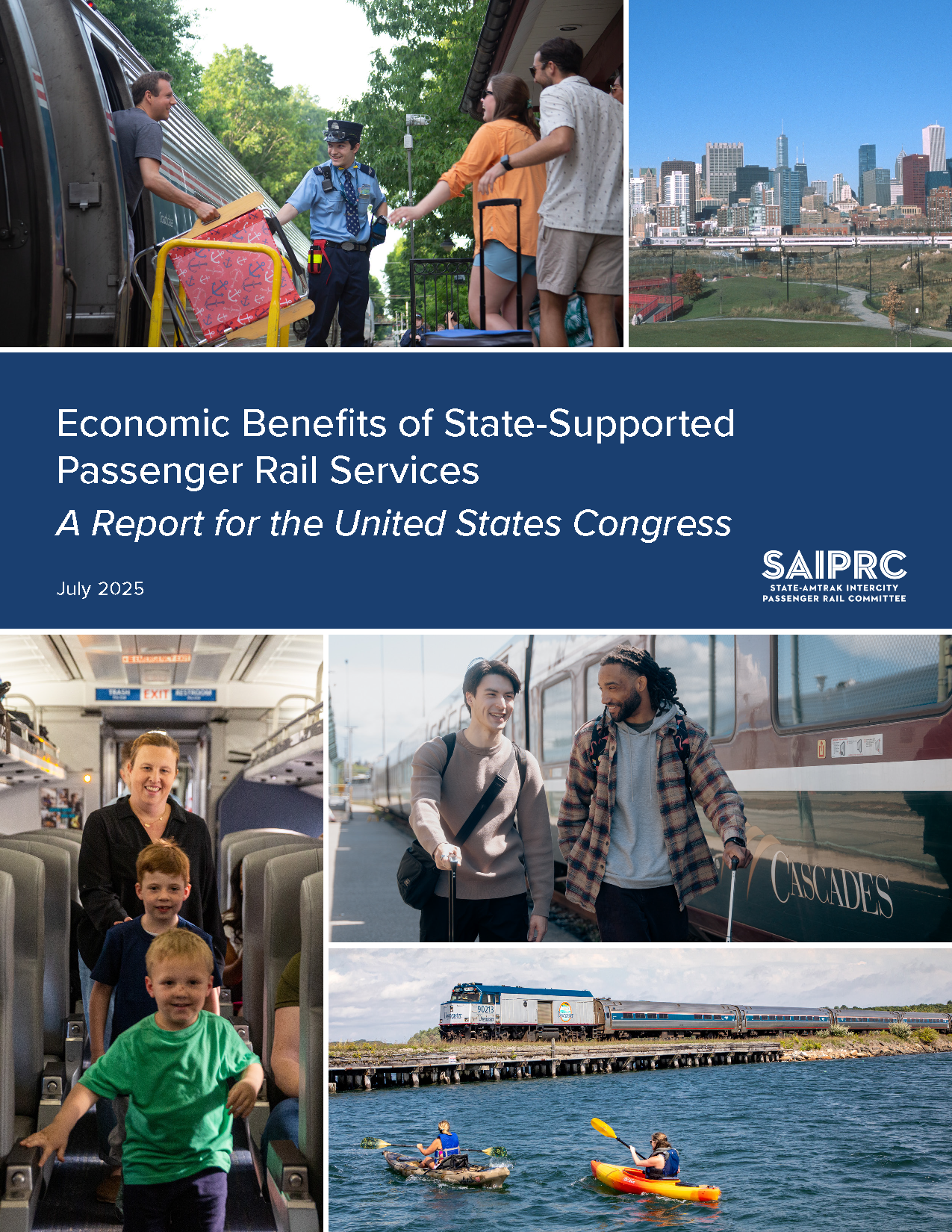The State-Supported Services
State-supported passenger rail services—currently 32 Amtrak routes located across the country—are services of 750 miles or less that run partially or fully on territory separate from the Northeast Corridor (Boston to Washington). They carried 14.5 million riders in FY2024 and represent almost one-half of all Amtrak passengers. Over the last decade, they represented 80% of Amtrak’s ridership growth system-wide.
Key Benefits
State-supported routes connect 152 million Americans, 68 million jobs, and 8.5 million college and university students across rural communities, small cities, and major metropolitan areas. Operations and capital investment in State-supported routes create a $4.4 billion economic impact every year, supporting 43,000 jobs with $2.7 billion in wages. Public investments in rail drive private investments in housing and commercial development, attracting new residents and businesses to station communities.
State-Amtrak Partnership
Per federal statute, States are responsible for funding the costs of each State-supported route. States contribute over $900 million in ticket revenue and direct payments to Amtrak each year. States also play an important role in supporting day-to-day operations, delivering capital investments, promoting passenger rail ridership and local economic activity, and planning for future rail services.
